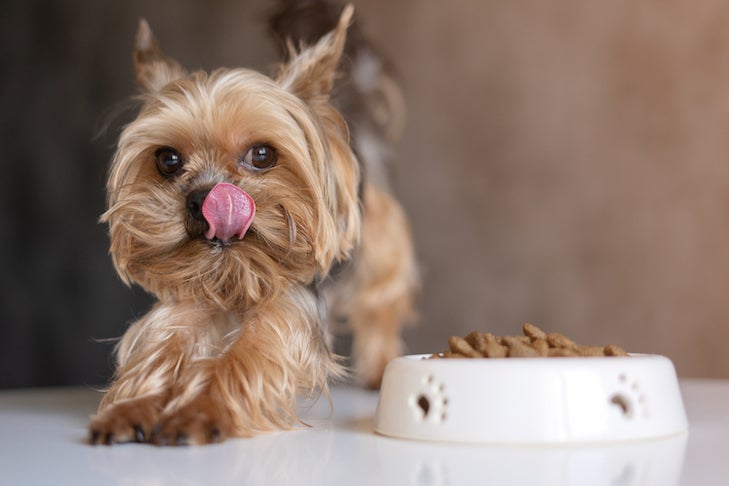Our research shows that nearly a quarter of all owners warm their dog’s food. So, who are these owners and why are they going through this extra trouble at feeding time?
Pet food companies suggest their products be served at room temperature so that, as Purina says, “your dog can taste and smell it properly.” But it might take an already-opened can stored in the fridge two hours to get up to room temperature by simply setting it out on the kitchen counter.
Purina advises that “you might consider microwaving wet foods (out of the can) for a short time. But avoid serving food that is either too hot or too cold.” So, there are owners who warm their dog’s chilled food to simply bring it back to room temperature or slightly above.
Heating up Food to Increase Interest in Food
A dog’s desire to eat might be diminished by illness or injury. “Energy requirements increase during convalescence after any prolonged illness,” veterinarian and author Bruce Fogle says. “But a dog’s desire to eat may be impaired by illness, so when feeding a convalescing dog stimulate interest by warming up energy-dense food to just below body temperature [between 101F and 102.5F]. This enhances the food’s taste and all-important aroma, and is easy to do in a microwave.” (Fogle suggests that if your ailing dog is on dry food, “add a small amount of animal fat to it, to enhance the smell and make the food more appealing, or add water at body temperature.”)

Similarly, elderly dogs with a diminished sense of smell, or those who are just plain finicky, can be induced to eat by the aroma of warmed food.
While everyone agrees that warming up food is the right way to go in these cases, there is disagreement as to the method of warming employed. As we’ve seen above, many authorities have no problem with using microwaves to heat pet food. Others warn against it. Deva Khalsa, VMD, states the case for the holistic approach: “Microwave cooking destroys many important nutrients. Just two seconds of microwaving can destroy all of the enzymes in grains and vegetables.”
Owners wary of microwaving will warm cold food in a double boiler or place the food in a plastic bag and immerse it in hot (not boiling) water. Others will bring the cold food back to room temperature by stirring some hot water into it.
No matter which side of the “great microwave debate” you take, there are several legitimate reasons to heat your dog’s (or cat’s) food. If you feel that your pet can benefit from a hot meal, discuss it with your vet.

